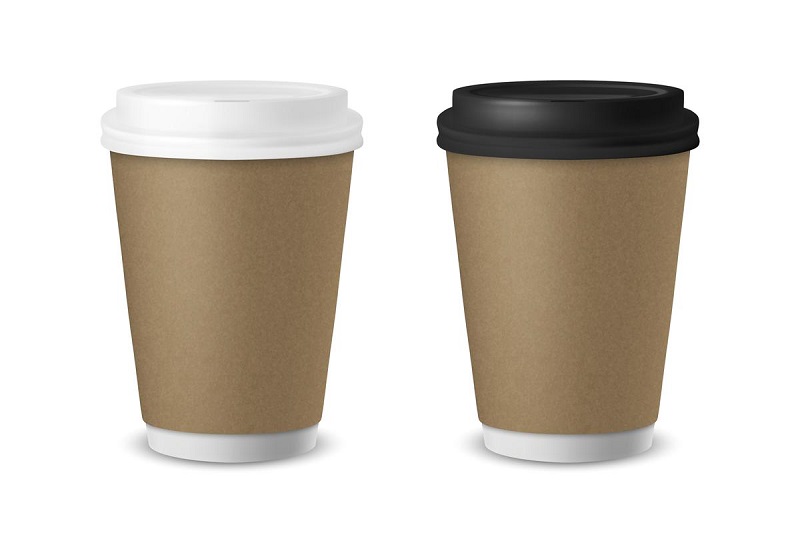As we sip our morning brew, do we ever ponder on the journey the coffee cup undertakes, from the café's countertop to the wastebasket, and beyond? With an upsurge in environmental consciousness, recyclable coffee cups have stirred both conversation and a dash of controversy. So, what is the true environmental impact of these vessels that hold our beloved caffeine? By delving into the often hidden aspects of recyclable coffee cups, we aim to unravel the facts and debunk the myths.
Envision this. Every day, we consume over 2.25 billion cups of coffee worldwide! But the convenient cup that carries our daily brew often ends up in the landfill, contributing to the escalating waste issue. Recyclable coffee cups present a solution, their claim for eco-friendliness hinging on their potential for reuse. But how feasible is the recycling process, really? Do recyclable coffee cups live up to their promise, or are they merely another playing piece in the high stakes of greenwashing?
This comprehensive exploration unravels the environmental impact of recyclable coffee cups, shedding light on their journey through production, usage and recycling. We will navigate the complex web of pros and cons, dive into the recycling process, and explore effective solutions to quench your daily caffeine cravings without costing the Earth.
Whys and Wherefores of Recyclable Coffee Cups
A recyclable coffee cup may appear to be just another paper vessel, but it's much more. The need for these cups arose from the colossal waste produced by disposable coffee cups. However, these "eco-friendly" variants come with their own set of environmental challenges.
Typically, recyclable coffee cups comprise a thin plastic lining that insulates the paper exterior. The issue starts with the recycling process, where separating the plastic lining from the paper is both complex and expensive. This stands as a roadblock for many recycling facilities. Consequently, only a handful of cups actually get recycled, leaving the larger mass untouched.
Despite the challenges, recyclable coffee cups hold promise. Innovations aim at bypassing the hurdle of plastic lining separation, and conscious consumer choices can leverage their recycling potential. However, this necessitates a deep understanding of the recyclable cups' life cycle.
The Lifecycle of Recyclable Coffee Cups
The lifecycle of a recyclable coffee cup can be broadly divided into three critical stages: production, use, and recycling.
Production involves the harvesting of raw materials, manufacturing of cups, and their distribution. This process is energy-intensive and emits greenhouse gases, contributing to climate change. The cups also consume large volumes of water during their production. Despite the environmental cost, this step is often overshadowed by the focus on end-of-life recycling.
The use stage includes the actual consumption of beverage from the cup. Ironically, this is its shortest-lived stage, considering its lengthy lifecycle. Post-use, the cup faces disposal, often ending up in landfill due to recycling challenges.
The recycling stage deals with the cups' reincarnation. It sounds simple enough – the cup gets reprocessed into a new product. However, given the technical difficulties in separating the plastic lining from the cup’s body, most cups never get the chance to be recycled.
Pros and Cons of Recyclable Coffee Cups
Recyclable coffee cups, while advocating an eco-friendly existence, portray a duality in their environmental impact.
The pros lie in the possibility of reuse, negating the need for fresh resources. When properly recycled, these cups introduce less waste into landfills and their embodied energy gets a second lease of life.
However, the cons revolve around the practical difficulties in recycling. The cups often end up in landfill due to inadequate recycling facilities and processes. Additionally, the energy used and emissions released during production cannot be overlooked.
Spotlight on the Recycling Process
The recycling process for these coffee cups requires special machinery to separate the plastic lining from the paper. Post separation, the paper is pulped and reshaped into a new product.
However, the limited availability of specialized recycling facilities poses a significant hurdle. Consumers are often unaware or misinformed about proper disposal methods, leading to cups being discarded inappropriately and invariably ending up in landfill.
Greener Alternatives to Recyclable Coffee Cup
Greener alternatives include reusable coffee cups or simply using ceramic cups at cafes. They may present an upfront environmental cost but prove beneficial in the long run.
Reusable cups can significantly reduce waste output with a few uses, thanks to their extended lifespan. Encouraging cafes to offer options for dining in or using reusable cups can inspire conscious consumer choices.
Conclusion: Re-thinking your Daily Brew
Our exploration of the environmental impact of recyclable coffee cups unveils a more complex reality than what is commonly perceived. While they suggest a step towards sustainable habits, their impressive claims are somewhat undermined by practical recycling obstacles.
While the recycling of these cups is indeed a challenge, their design and promise represent a crucial starting point for rethinking our consumer habits. The potential they harbor is reliant heavily on the infrastructural development of our recycling facilities, informing disposal methods and making conscious choices.
Ultimately, each beverage we consume is an opportunity to tread lightly on our planet. By choosing reusable alternatives or patronizing cafes that encourage eco-friendly practices, we can indulge in our daily caffeine ritual without brewing up an environmental storm.



0 comments :
Post a Comment
Note: Only a member of this blog may post a comment.